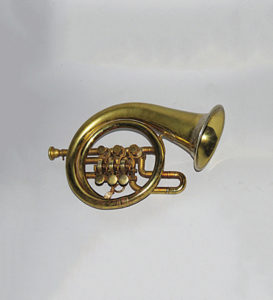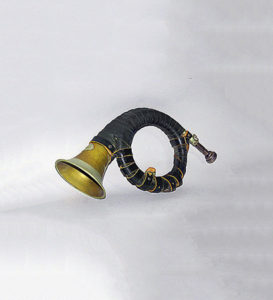Post Horns / Coach Horns
The term post horn is thought of as a simple straight or coiled brass or copper small wind instrument with cupped mouthpiece used by guards of mail coaches of the 18th and 19th centuries. By 1820 post horns with crooks and tuning slides were used in band music. These post horns were varied and closely connected with various countries and cultures, each with its unique measurement, description, and function, as seen in this collection. With the addition of valves to these post horns, they became the cornet in the 19th century. A distinctive variance in these early horns was not to confused the post horn with the coach horn.
The post horn (tonga horn) has a cylindrical bore, trumpet-shaped bell, was no more than 32 inches, and was used by guards riding coaches usually pulled by two horses. By the end of the 18th century, they were crescent-shaped, coiled, or straight.
The coach horn (four-in-hand teams) has a conical bore, funnel-shaped bell, was straight and up to 36 inches. They were used by guards riding coaches usually pulled by four horses.


